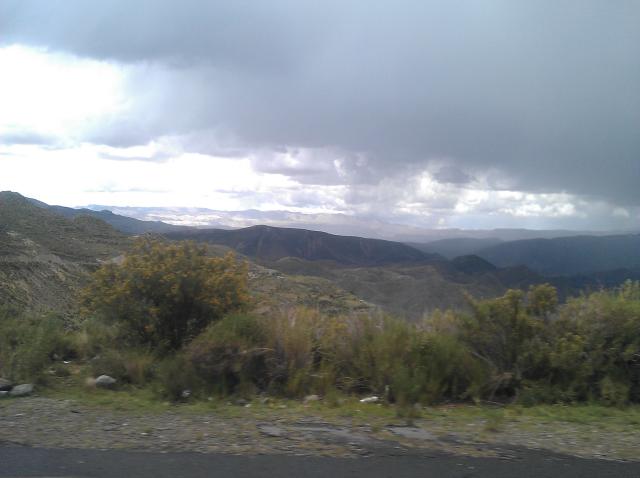Potosí – Oruro
Yesterday I finally left Potosí, after almost a week that I spent there with Potosí as a base for activities. I had asked a lot of people about accommodation options between Potosí and Challapata, and the majority told me that yes there is accommodation in Yocalla (43km from Potosí) and most likely in Ventilla (62km from Yocalla – but with a lot of climbing in between). And so my plan was to first cycle up to Yocalla on the first day, and then to Ventilla on the second day, to Challapata on the third day, and finally from Challapata to Oruro in one or two days.
The first 15-20km from Potosí was mainly a descend – up to the Thermas de Tarapaya. But then the road began to go up and down up to Yocalla, where another climb started.

In Yocalla I asked a few people about accommodation, and they told that yes there is accommodation about 1-2km up the hill. And so I began to climb, and asked again at a service station, where they also told me “in 1-2km”. I continued, and arrived to the next village, where there were a few restaurants, and also a small hotel. Unfortunately they told me that they didn't have any free room – all was occupied (how strange). I asked at other bigger buildings/restaurants, but there was nothing... Finally, I decided to take the bus up to Challapata, or possibly up to Oruro.
But first I had lunch and then I began to wait for a bus. Shortly after a thunderstorm began – and what a thunderstorm. At first I waited outside, protected from the rain by an overhanging roof, but later I had to enter the restaurant, where some other people had already sought shelter. Luckily, when finally a bus came, it wasn't raining that heavily, and the bicycle was quickly loaded on the bus and I was travelling by bus up to Oruro.
The bus had to climb a lot on the road to Ventilla, and in spite of the rain the views were impressive.

In Challapata began the altiplano, but I continued by bus up to Oruro, where I arrived at about six in the afternoon. I unloaded the bike and began to look for accommodation. My first choice – taken from the Lonely Planet – didn't exist any more, and so I went back to the bus terminal, as the second choice was nearby.
Oruro is a reasonably large city, with more than 200,000 inhabitants, and some industry related to mining. It doesn't have much tourism infrastructure, and is a little bit off the 'gringo trail', and so there are few foreign tourists. For dinner I went to a restaurant near the terminal, where I had salad and chips.
The following day I had breakfast at the terminal, and then went for a walk through the town. I went to the central square – about 30 minutes walk – and while I was walking along the main avenue, I saw a train engine passing slowly along the avenue.

I walked a bit through the centre of Oruro, and then went to a mining museum, the entrance to which is through a church. I waited to enter in the church during mass – what a strange thing. The museum wasn't that impressive, especially after the visit to one of the mines in Potosí.

Later I went to an internet café to update my blog with texts about Potosí, and then I had lunch in a restaurant in the centre. I returned to the hotel to again dye my hair with henna...
- Alana Queer's blog
- Log in to post comments
 Español
Español
